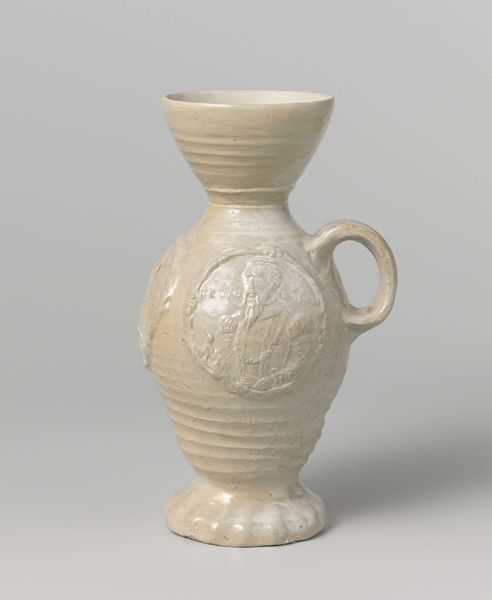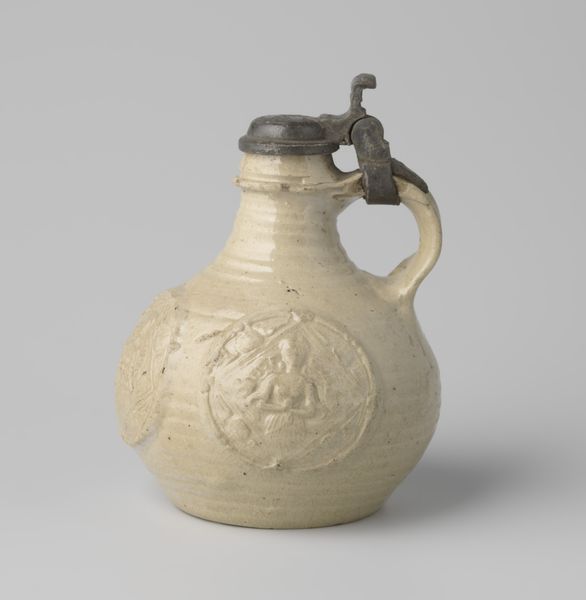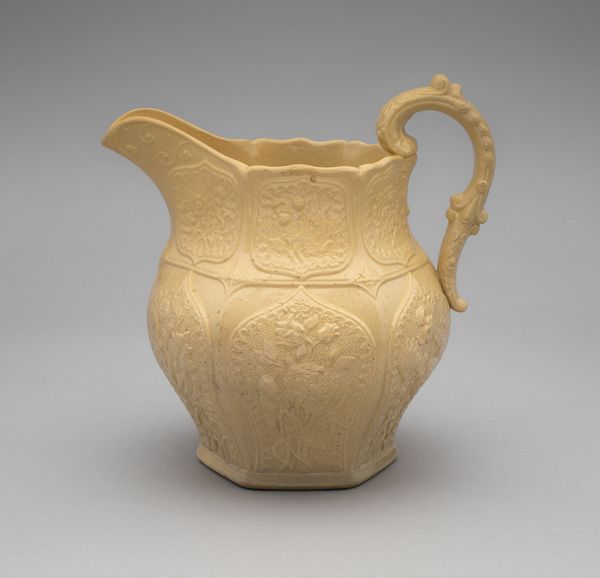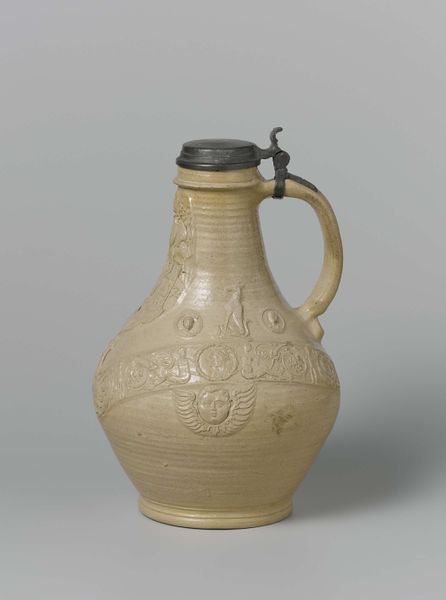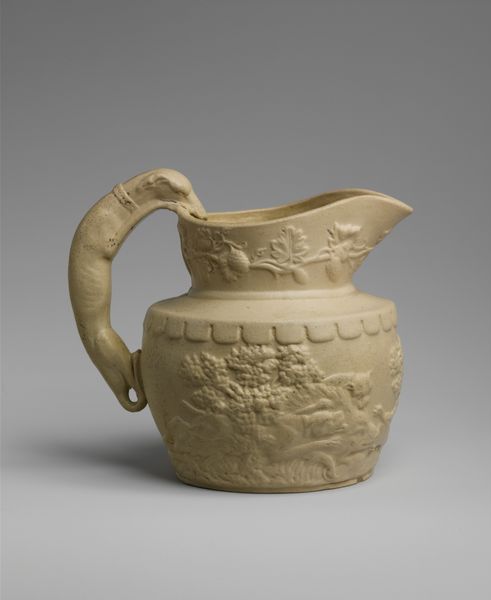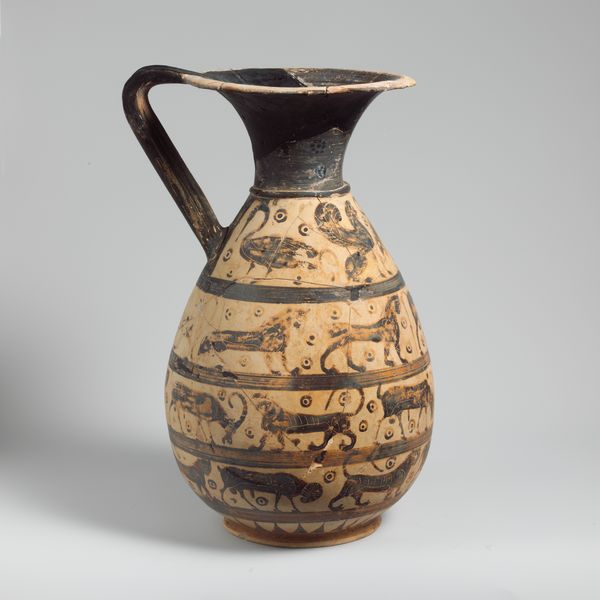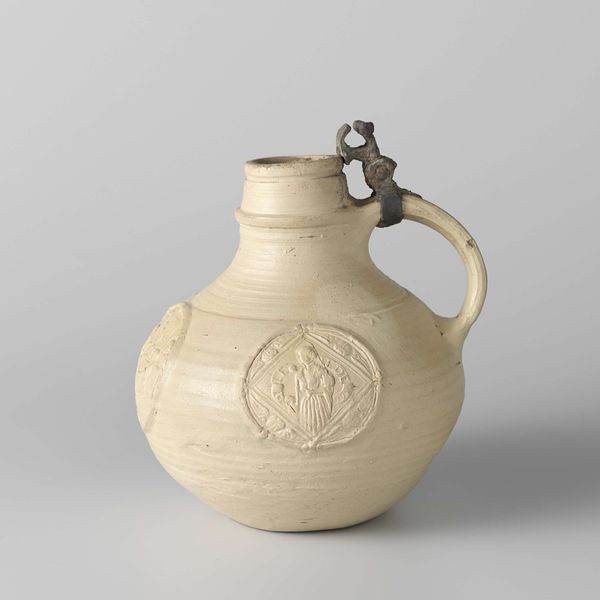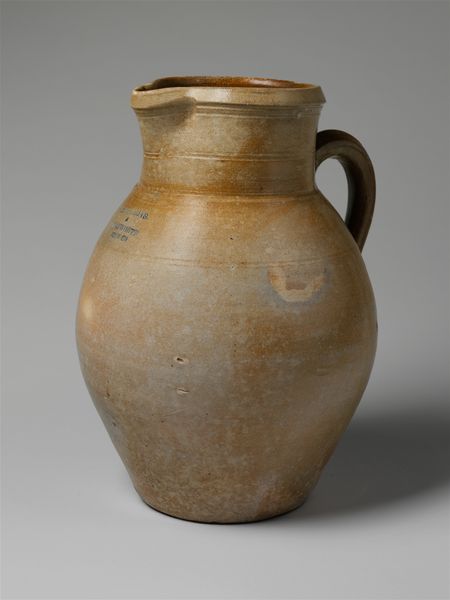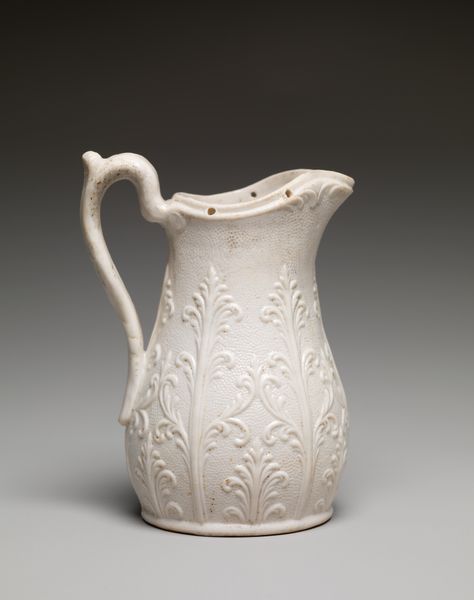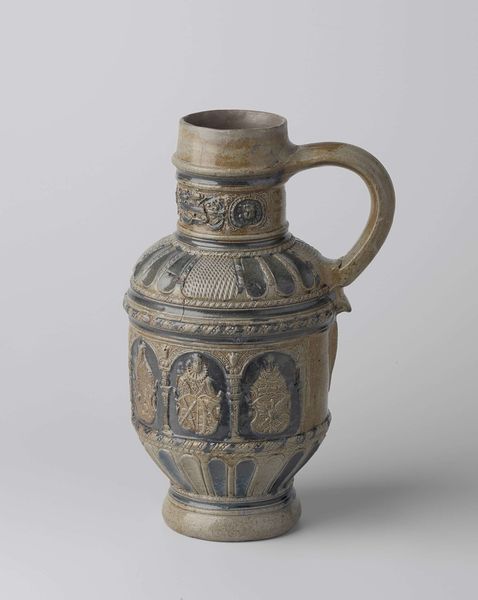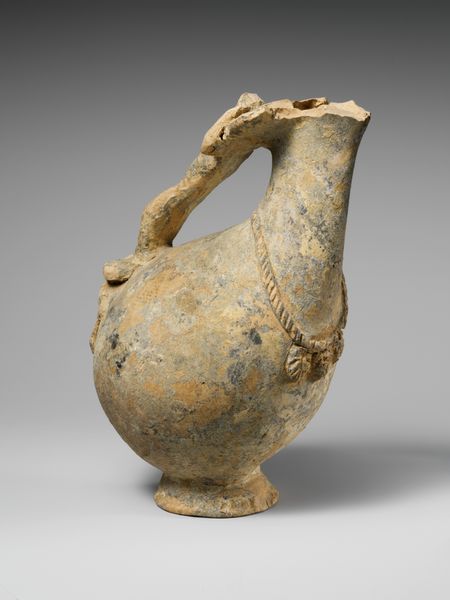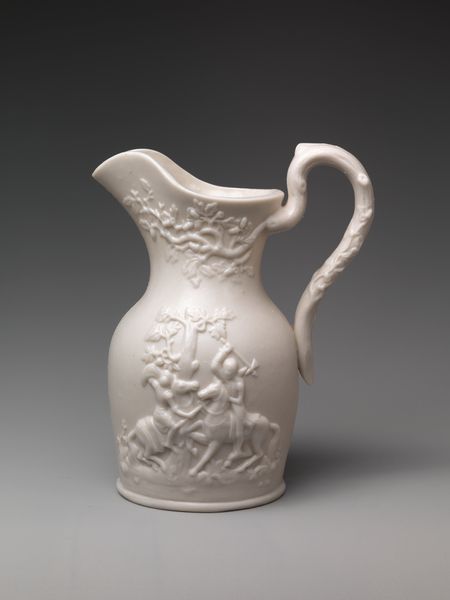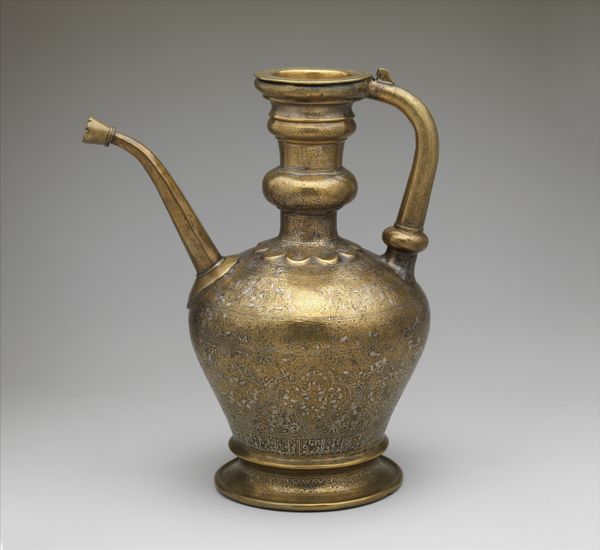
ceramic, earthenware, sculpture
#
ceramic
#
form
#
11_renaissance
#
earthenware
#
stoneware
#
sculpture
#
ceramic
#
decorative-art
Dimensions: height 13.3 cm, diameter 5.1 cm, diameter 6.7 cm, diameter 6.2 cm, width 8.9 cm
Copyright: Rijks Museum: Open Domain
This salt-glazed stoneware beaker with medallions was made in Germany, likely by Anno Knütgen sometime in the late 16th century. Here, the material itself is key. Stoneware like this isn't just any clay; it requires a high firing temperature, resulting in a dense, non-porous vessel. Then there's the salt-glaze, achieved by throwing salt into the kiln during firing. This creates a vapor that reacts with the clay, forming a subtle, glassy surface. The mottled effect gives a sense of depth. But it's the molded medallions that really catch the eye. These would have been created separately, then applied to the body of the beaker before firing. Consider the skill involved in creating these tiny details, and how these decorative elements elevate the everyday object to a symbol of status. Ultimately, objects like this bridge the gap between craft and fine art, reminding us that even the most functional item can be a vehicle for creativity and expression.
Comments
No comments
Be the first to comment and join the conversation on the ultimate creative platform.
